Try our favorite, clean protein powder: See our top pick →
Try our favorite, clean protein powder: See our top pick →
This post contains links through which we may earn a small commission should you make a purchase from a brand. This in no way affects our ability to objectively critique the products and brands we review.
Evidence Based Research To fulfill our commitment to bringing our audience accurate and insightful content, our expert writers and medical reviewers rely on carefully curated research.
Read Our Editorial Policy
It’s true—cherry juice on its own is probably not going to power you through that first week after back surgery.
But on the other hand, the “casually sore” have no business messing around with powerful and potentially addictive prescription muscle relaxers, which is where natural muscle relaxers come in.
Whether you’re an avid exerciser and/or somebody who deals with mild-to-moderate pain and muscle tension for various medical reasons, you don’t have to contend with potentially serious side effects to find effective relief.
Through various mechanisms, the natural muscle relaxers we’ll cover in this article can alleviate the pain associated with tight muscles consistently and effectively when used correctly.
But first, you can’t really understand how natural muscle relaxers work without a (mercifully brief) overview of how muscles work.
Pedestrian site design aside (just saying), BioNinja provides a succinct and accurate explanation of the major steps involved in a muscle contraction, which include the following:
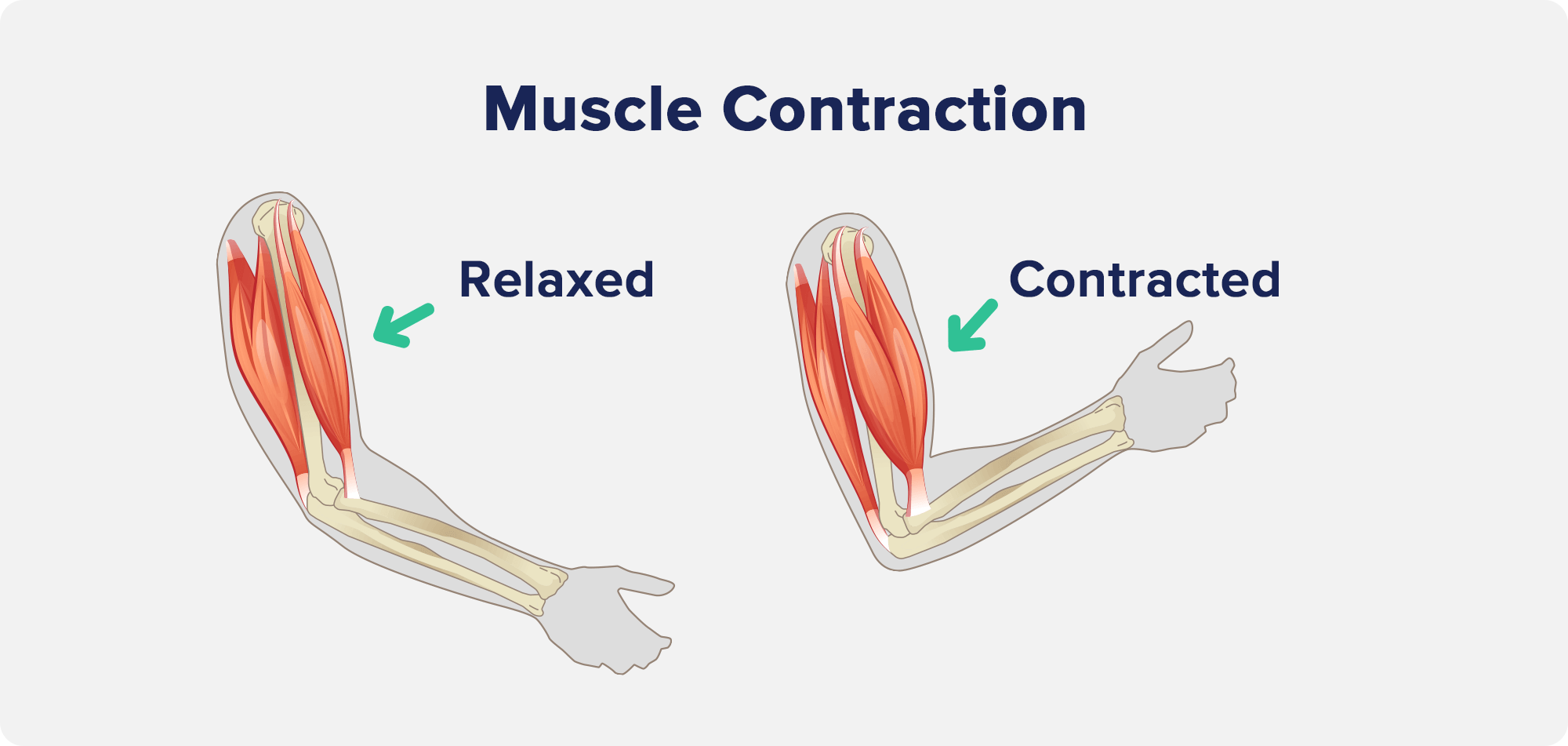
We don’t need graduate-level biochemistry for today’s purposes. Here’s the most condensed and non-eye-crossing summary we can give:
Depolarization: The type of nerve cell responsible for the muscle contraction receives a signal and changes the electrical environment within the target muscle tissue (hence “depolarization”) in such a way that allows calcium ions to rush into the muscle.
Contraction: The calcium exposes binding sites on muscle fibers (made from the proteins actin and myosin) for muscle filaments to create “bridges” between fibers. ATP comes along and breaks the bridges, forcing them to relocate further along the muscle fibers, a movement which eventually results in the sliding along of fibers across each other, which results in a muscle contraction. Voila.
Relaxation: When the signal being sent via the nerve is cut off, the calcium goes back home (to the sarcoplasmic reticulum), which prevents actin and myosin from doing their whole bridge thing.
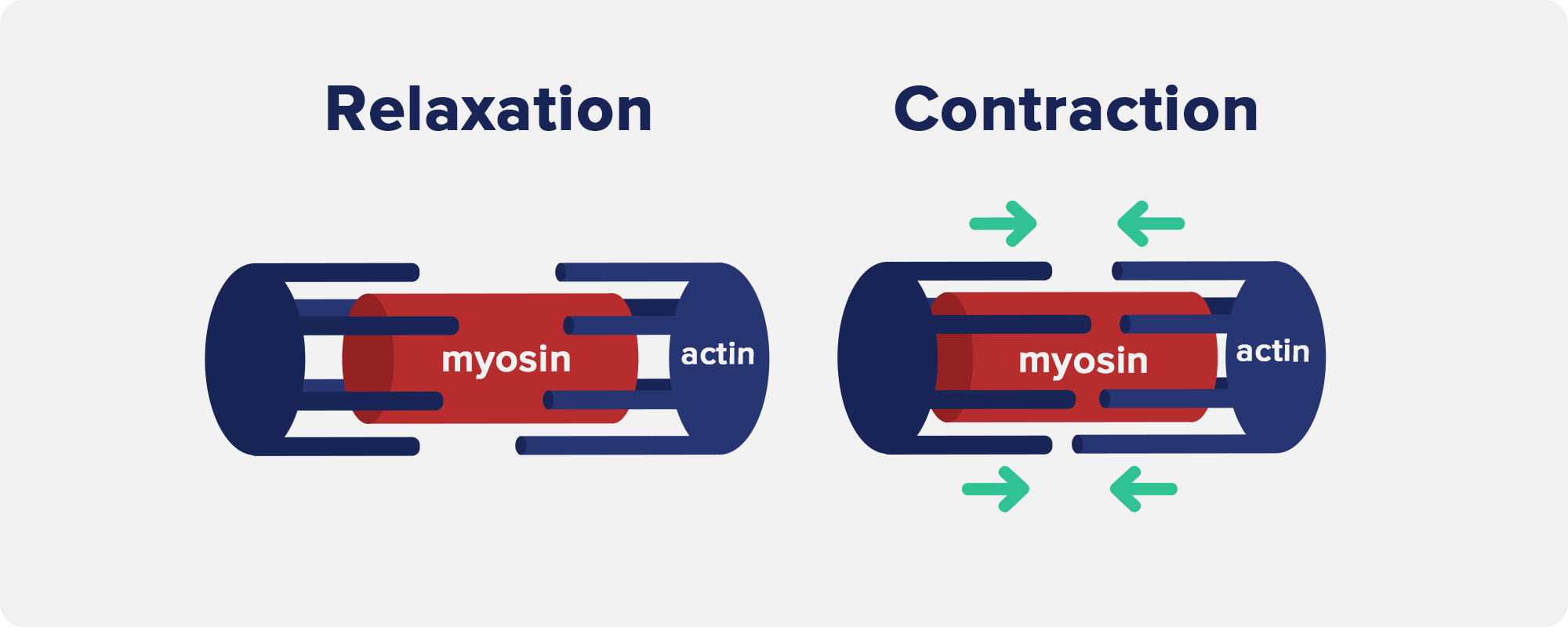
To be clear, this very abbreviated explanation doesn’t automatically encompass the functional target(s) of every muscle relaxant out there, as there are many related processes outside the contraction-relaxation cycle itself that can be leveraged to help muscles relax, recover, and more.
Adding to this, otherwise sound physiology obviously doesn’t guarantee healthy muscle function if you’re contending against low-quality supplements, drugs, medical conditions, dehydration, and so on.
Crash course covered, we can now map out at least some of the most popular plays in the natural antispasmodic playbook, as neatly outlined by this University of British Columbia finding.
The first antispasmodic property of natural foods proposed in this article and affirmed by others involves the “inhibition of the response to neurotransmitters 5-hydroxytrptamine (5-HT) or serotonin and acetylcholine.”
In a nutshell, this means that some foods contain compounds that can calm your muscle tissue’s spasmodic response to “excitatory” chemical messengers.
However, the authors go on to explain that there is some debate among scientists regarding the specific antispasmodic mechanisms for certain natural compounds, including their interactions with:
Alright, lab coat dress-up doesn’t feel fun anymore.
In a nutshell, these mechanisms can calm muscle spasms by moderating both the nervous system’s response to excitatory signals as well as some of the subsequent steps in a muscle contraction (all that actin and myosin business mentioned above).
With no further ado, let’s get to the actual list of natural muscle relaxers, shall we?
“Dude, just try xyz. It’ll help with soreness, I promise.”
Your well-intentioned gym buddy might be right, but they also might be deceived by the overconfident claims associated with certain foods and supplements, powered by good-old word-of-mouth and the placebo effect.
Here’s a much-whittled-down (and not exhaustive) list of actually research-supported, natural muscle relaxers:
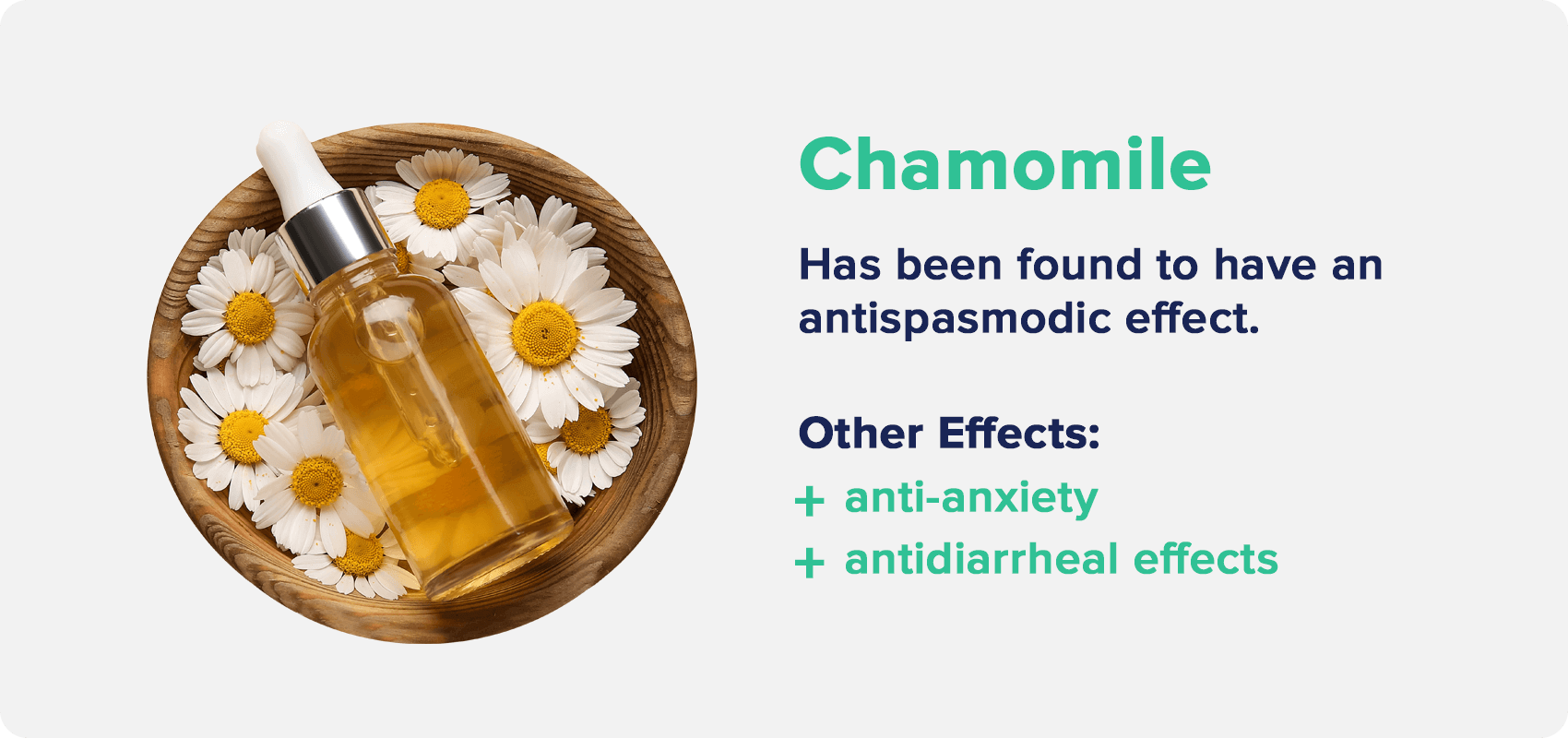
Primarily believed to be mediated through the above-mentioned potassium channel mechanism, the antispasmodic effect of chamomile (Matricaria chamomilla) has been highlighted in several studies.
After testing this effect on muscle tissue in rabbits, this study from Aga Khan University in Pakistan found that chamomile also has a noticeable, but weaker influence over calcium ions that works toward the same antispasmodic function.
But if swirling and sipping from a cup of chamomile tea between hang-clean sets is too big of a blow to pride, alternative lines of inquiry continue to uncover more chamomile benefits that you can apply outside of the weight room.
For example, chamomile is suggested to have antidiarrhoeal, anti-anxiety, and several other applications as well.
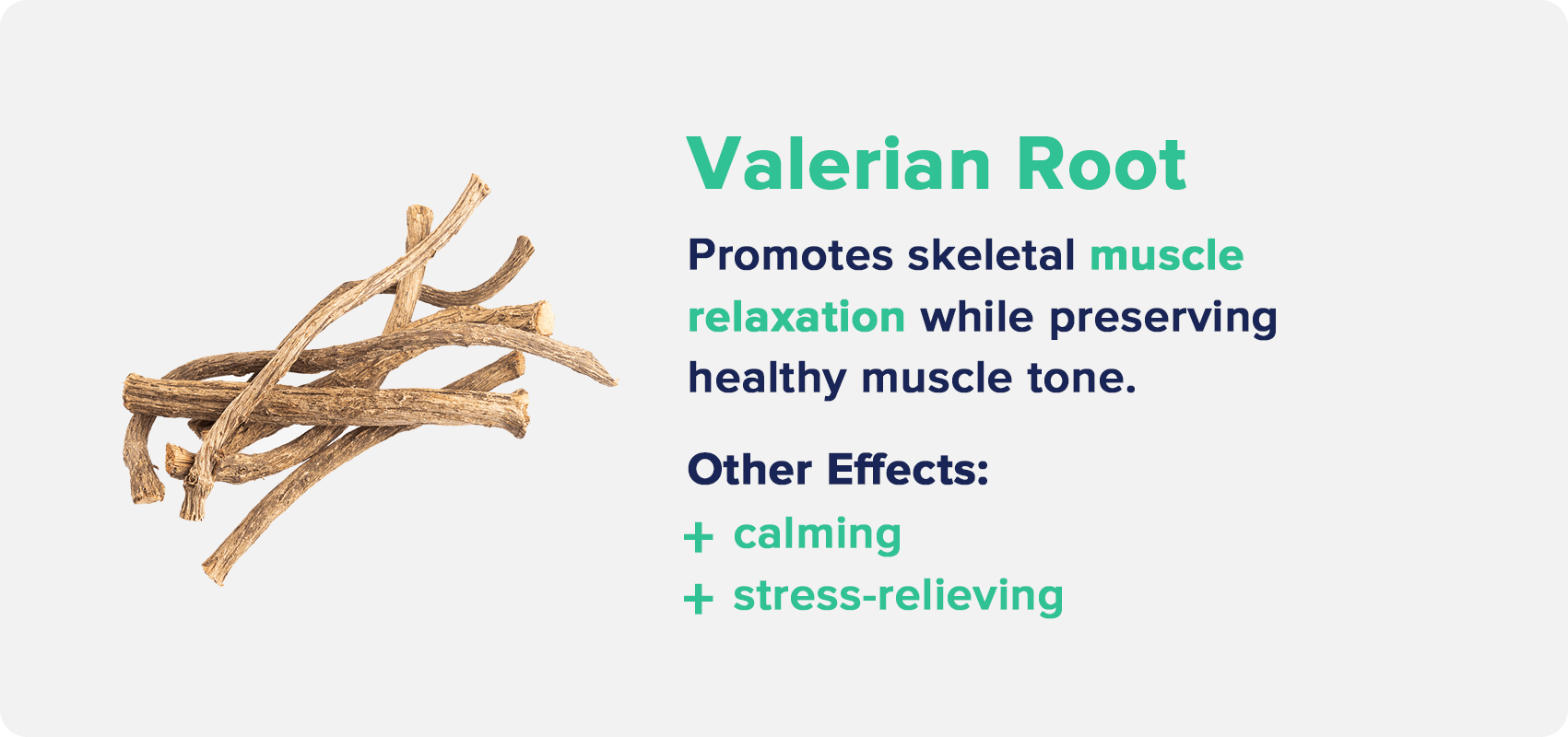
Typically, valerian root extracts are promoted for their calming, stress-relieving benefits.
However, this finding by a French research group shows these effects can also apply to skeletal muscle relaxation.
In this particular study, valerian root extract outperformed a muscle relaxant drug (tetrazepam) in its ability to promote a “decrease in skeletal muscle strength without any significant effects on endurance and neuromuscular tone” among mice.
The final comment relating to the preservation of neuromuscular tone, which is the muscle’s natural resistance to being stretched, is important because it points to a healthier state of muscle relaxation.
This is because a prolonged and/or recurring loss of muscle tone can cause problems with posture, flexibility (hypermobility), and other issues in both kids and adults.
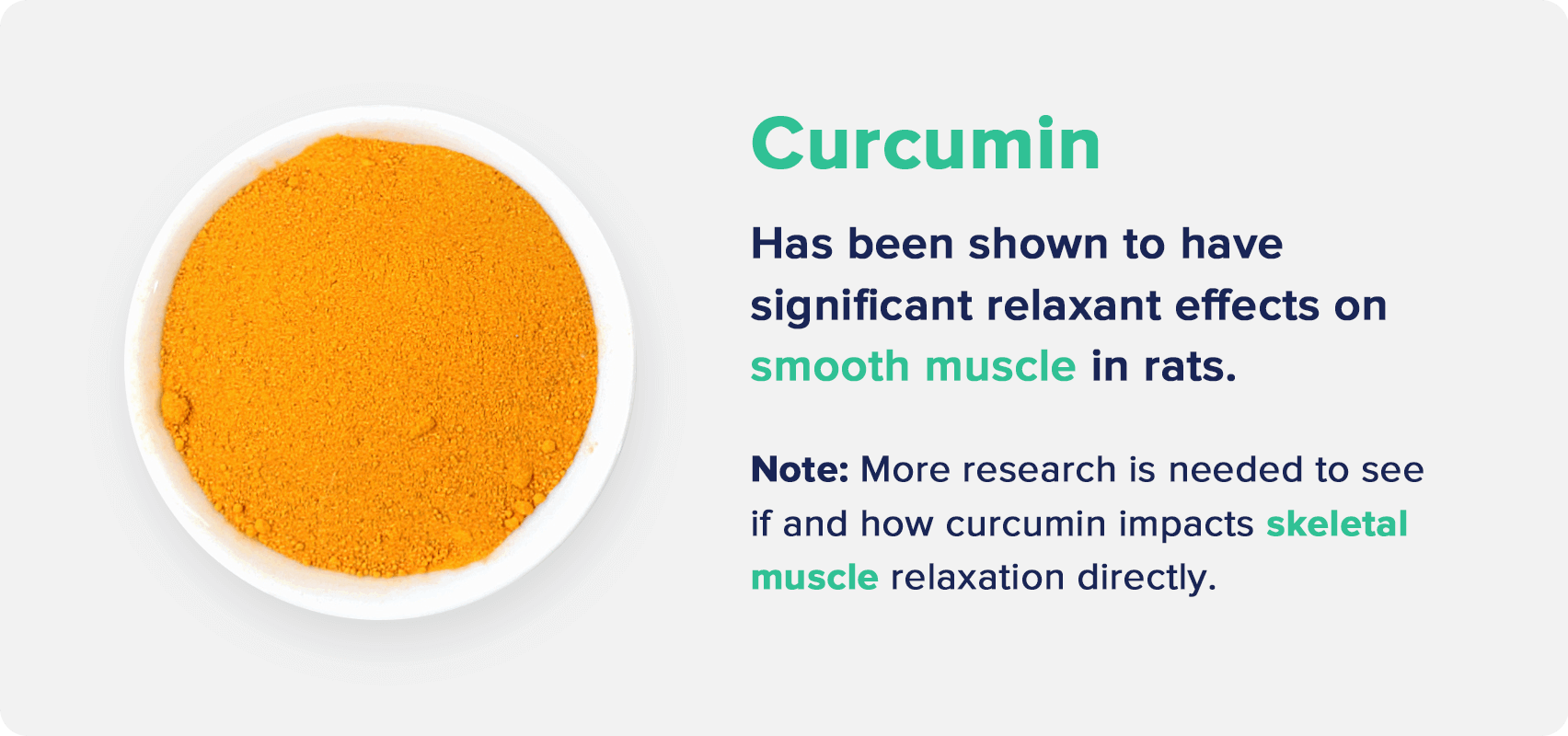
The active compound in turmeric has been studied from many different angles at this point, including investigations into its anticancer, anti-aging, neuroprotective, antioxidant, and other properties.
On the muscle relaxant front, this Mashhad University of Medical Sciences (Iran) study shows that each of the four Curcuma longa concentrations tested on tracheal smooth muscle in rats showed “significant concentration-dependent relaxant effects.”
However, we need to add a big asterisk here: smooth muscle and skeletal muscle are completely different tissues.
Skeletal or “weightlifting muscles” are those that attach to the skeletal frame and allow for movement, where smooth muscle lines other anatomical structures like blood vessels and intestines.
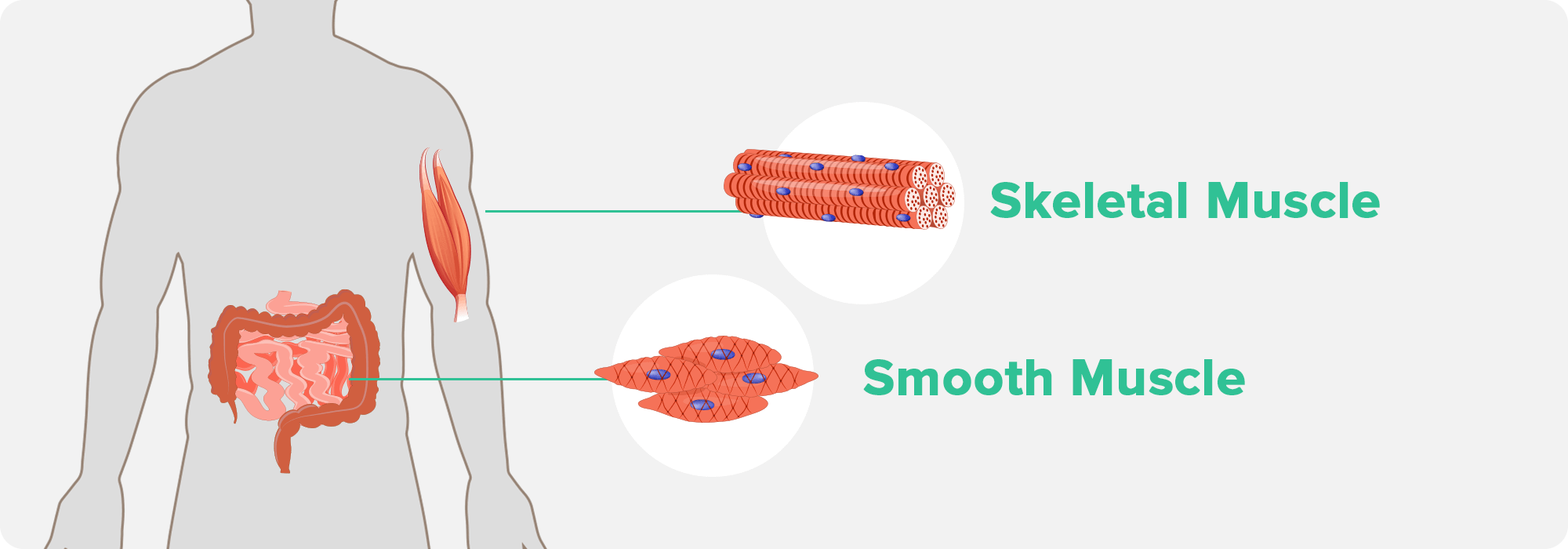
While the established anti-inflammatory properties of curcumin appear to have a role in exercise recovery, more research is needed to see if and/or how they directly impact skeletal muscle relaxation.
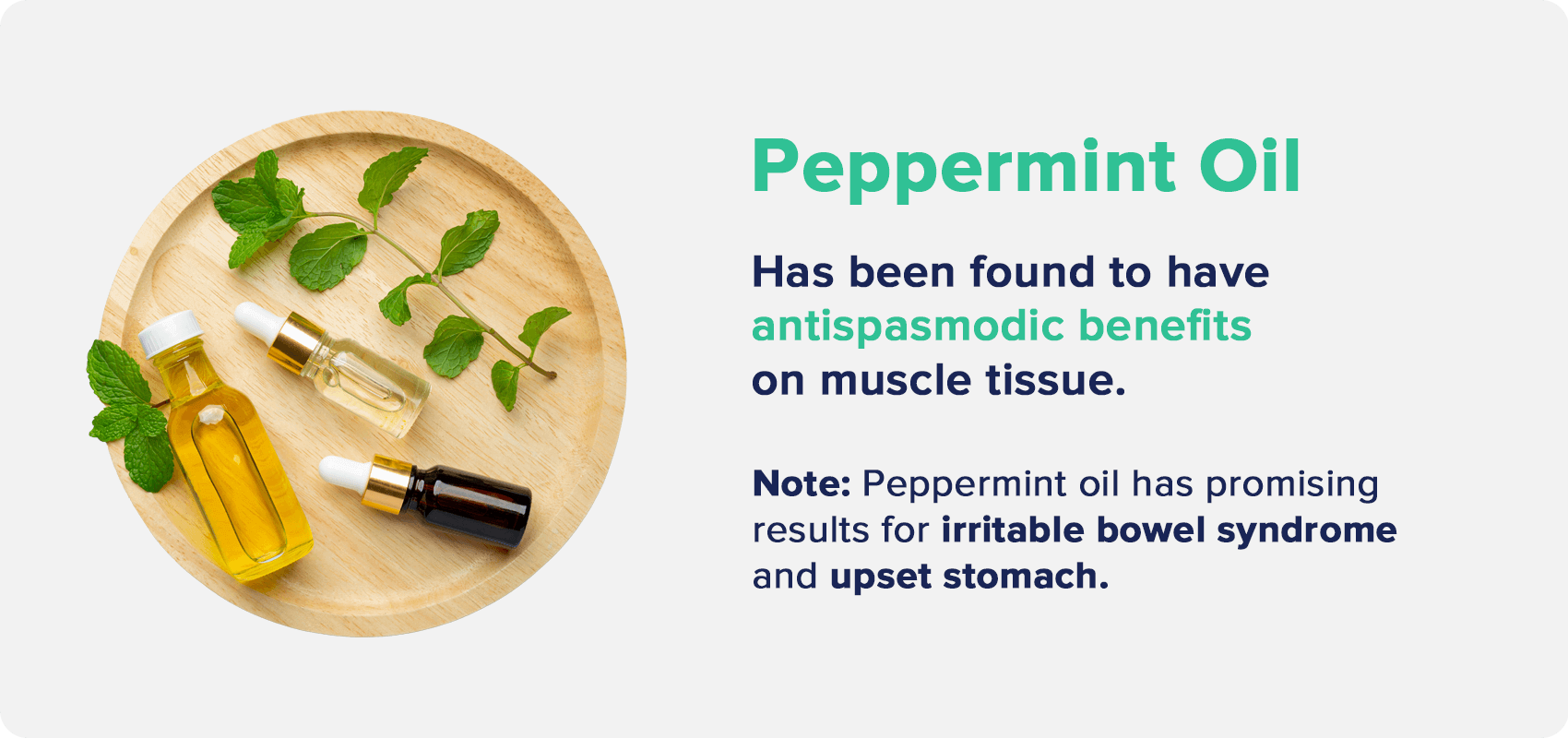
Chalk up yet another “I told you so” for Ayurvedic medicine and the other millennia-old healing traditions that took advantage of peppermint oil, because contemporary research is confirming the antispasmodic benefits of this remedy, among several other helpful properties.
This review of preclinical and clinical studies reports that peppermint oil (Mentha x piperita) applied to guinea pigs and rats inhibited both calcium and 5-HT3 receptor channels.
As described above, both of these mechanisms facilitate muscle relaxation.
The same review points to several other clinically relevant applications of peppermint oil that have shown promising results, including irritable bowel syndrome (IBS) and dyspepsia (upset stomach).
Thanks to the careless overuse of the umbrella term “recovery” by fitness supplements, it’s often difficult to tell which ingredients help with which aspect of muscle recovery: relaxation, reducing inflammation, protein synthesis, and so on.
This is why we’re splitting this list in two; all of the foods listed below indirectly support muscle relaxation via other mechanisms and/or tissues.
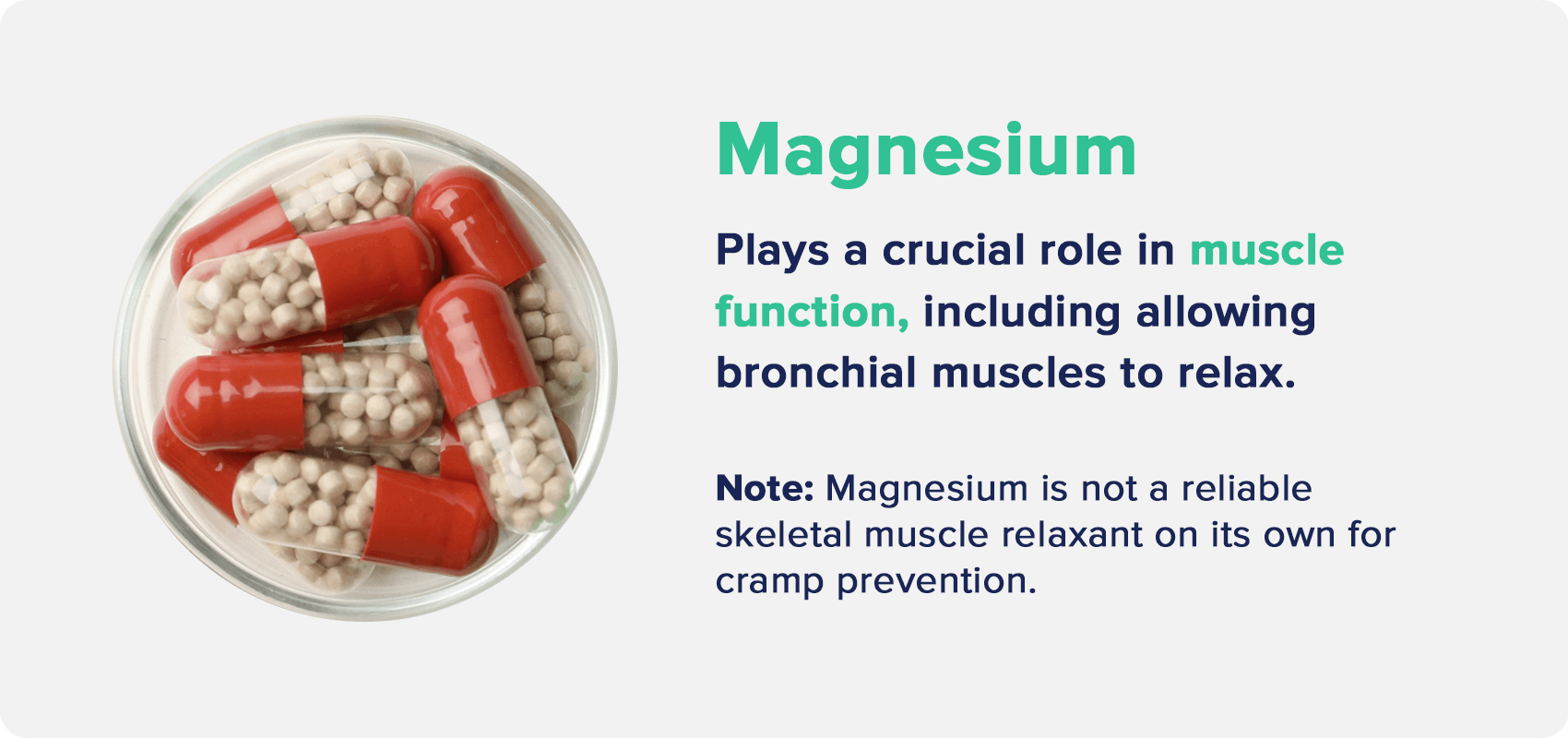
This abundant and extremely hard-working electrolyte has literally hundreds of roles in metabolic processes throughout the body, several of which have to do with muscle function.
This handy guide to magnesium explains that magnesium deficiency can cause tremors, muscle fasciculations (twitching), hyperreflexia, and other muscle-related issues, offering important clues as to its importance for muscle tissue.
A more clearly outlined connection shows the role of magnesium in allowing bronchial (smooth) muscles to relax, which is a highly important therapeutic target for asthmatics.
Despite these key roles, the research consensus doesn’t present a robust case for magnesium as a skeletal muscle relaxant on its own.
You’ll see plenty of supplements marketed as such, but this study from the University of Alberta at Edmonton and contemporary findings suggest that magnesium doesn’t provide “clinically meaningful cramp prophylaxis.”
Essential for muscle function and recovery in various ways? Yes. Powerful enough to stop a gnarly cramp on its own? Not necessarily.
Find the best magnesium supplement for you in our guide.
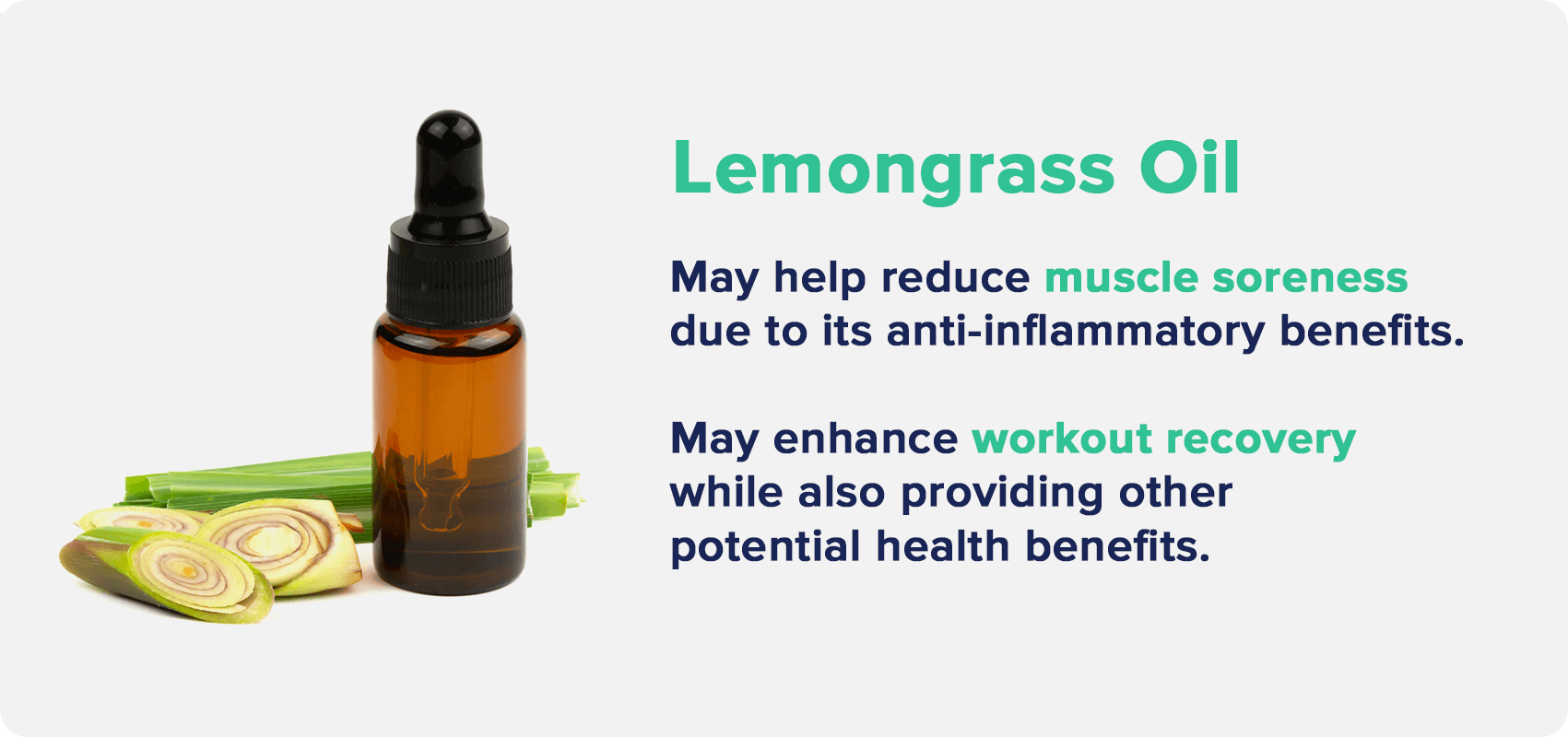
It seems like just about every time someone tests a phytochemical, we hear the term “anti-inflammatory,” a trend echoed in lemongrass essential oil.
In this case—a study by Algerian biologists—orally ingested lemongrass oil significantly reduced inflammation related to carageenan-induced edema (fluid buildup) in animal test participants.
The same effect held up when the lemongrass was applied topically, this time to croton-oil-induced edema of the ear.
It doesn’t just stop at anti-inflammatory benefits for lemongrass oil—antifungal action is probably the second most commonly attributed benefit.
If you’re looking for a natural oil that may speed up workout recovery with potential for additional health benefits, lemongrass oil is a thing.
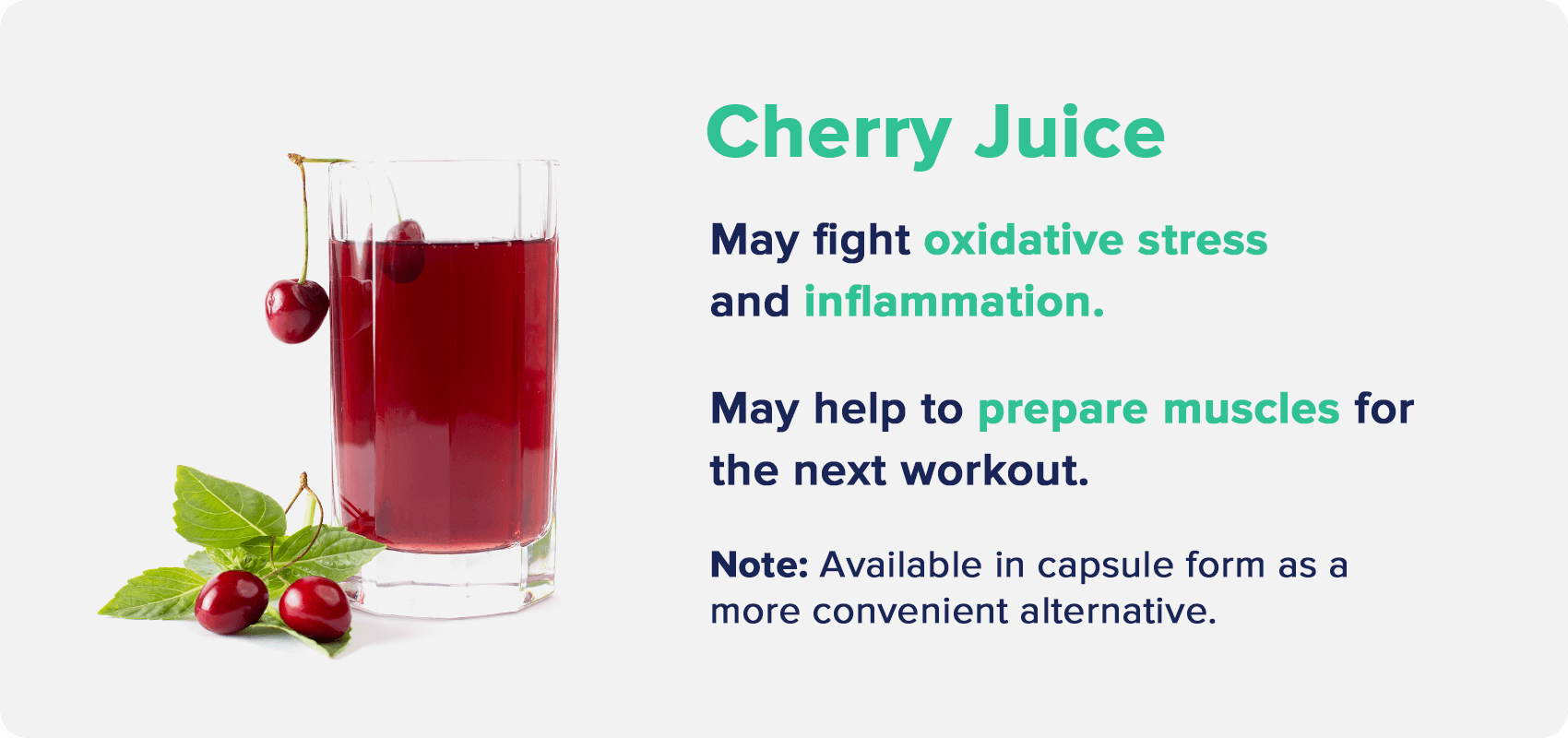
The main draw when it comes to tart cherry juice for athletes is the potent cocktail of antioxidant and anti-inflammatory compounds it contains.
Considering these two issues (oxidative stress and inflammation) characterize the effects of exercise on muscle tissue, it’s no surprise that the literature and many athletes agree on the awesomeness of tart cherry juice for muscle tissue recovery.
You can think of antioxidants and anti-inflammatory compounds as a “clean-up crew” that goes into your muscle tissue after exercise has trashed the place and prepares it for the next workout.
Tart cherry juice is about as pro-recovery as it gets in the natural world. Cut it with water if you must, but real athletes drink it straight!
Stay hydrated, kids. It’s just a joke.
In all seriousness, you can also find affordable and high-quality tart cherry capsules if that’s your preference.
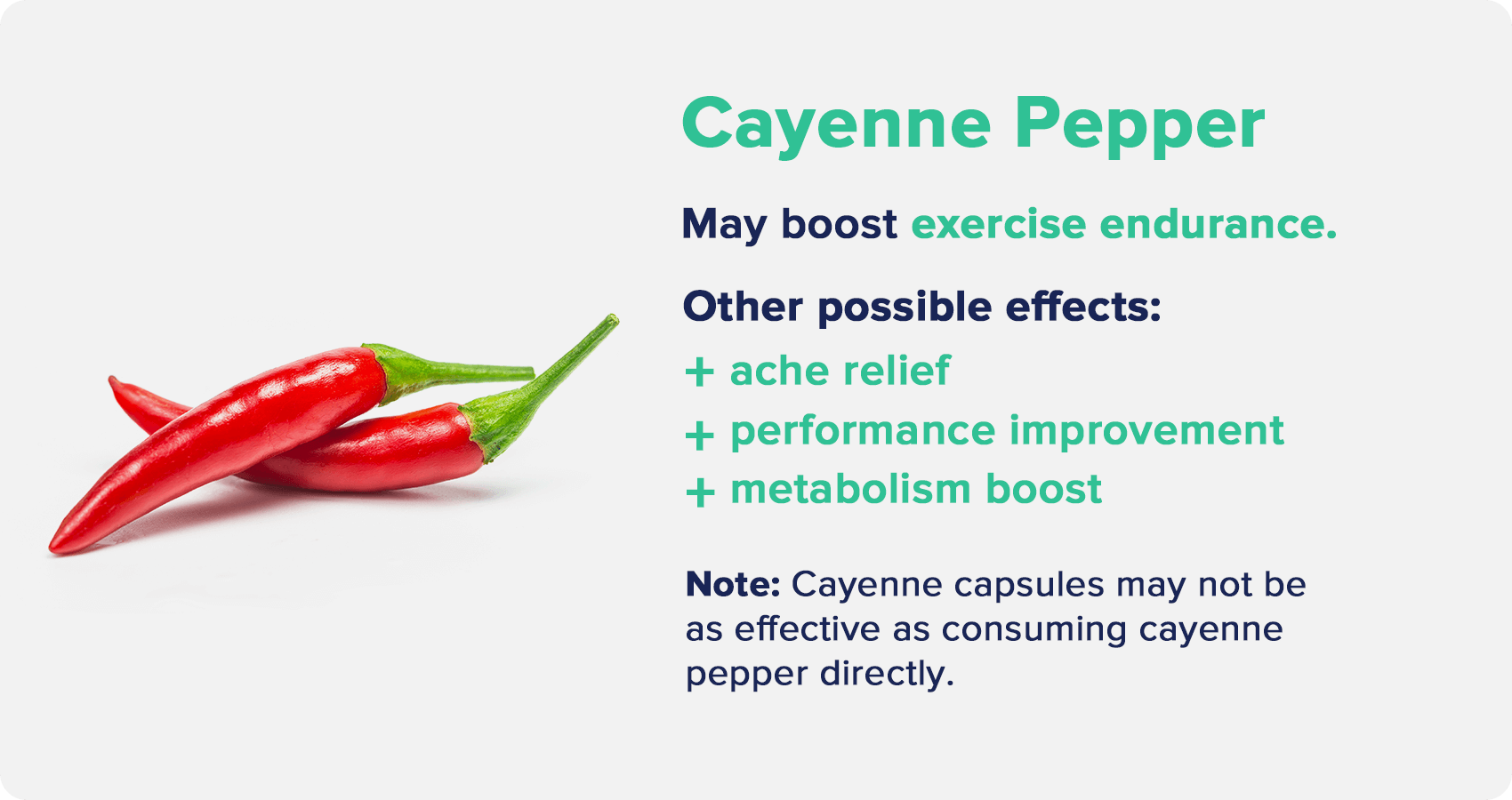
Finally, the evidence for cayenne pepper as an antispasmodic is promising, but still fairly thin.
However, the evidence for cayenne as an exercise endurance booster is arguably more concrete.
It’s a phytochemical in cayenne (and other peppers) that you’ve likely heard of—capsaicin—that has been shown to have “anti-fatigue activity,” as this National Taiwan Sport University study put it.
In the study, mice given the greatest concentration of capsaicin performed significantly better on an “exhaustive swimming” test than those given less or no capsaicin.
The researchers measured increased hepatic glycogen (a solid workout fuel source) and decreased lactate production in the mice that consumed capsaicin, both of which confirm an endurance-boosting effect.
If spicy isn’t your thing, we’ll be honest—even cayenne or capsaicin capsules aren’t really an effective workaround.
If you can tolerate it, many folks take capsaicin for aches and pains, workout performance, and/or to use the metabolism boost as a way of cutting back on coffee.
In addition to the above natural muscle relaxers you can source from food, you can treat and/or prevent tight muscles with:
● Proper hydration
● Adequate nutrition (preventive)
● Rest
● Regular exercise
● Stretching
● Proper posture
● Chiropractic adjustment
● Therapeutic modalities (ice, heat, TENS)
They don’t all directly address muscle tension after the fact, but the following vitamins and other micronutrients can help prevent muscle tightness in various ways:
● Vitamin A
● Several B vitamins
● Vitamin C
● Vitamin D
● Magnesium
In this article, we also showcased a small sample of the many plant-based compounds that have been suggested by research to have muscle relaxant (or closely related) effects. For example, chamomile, valerian root, and curcumin.
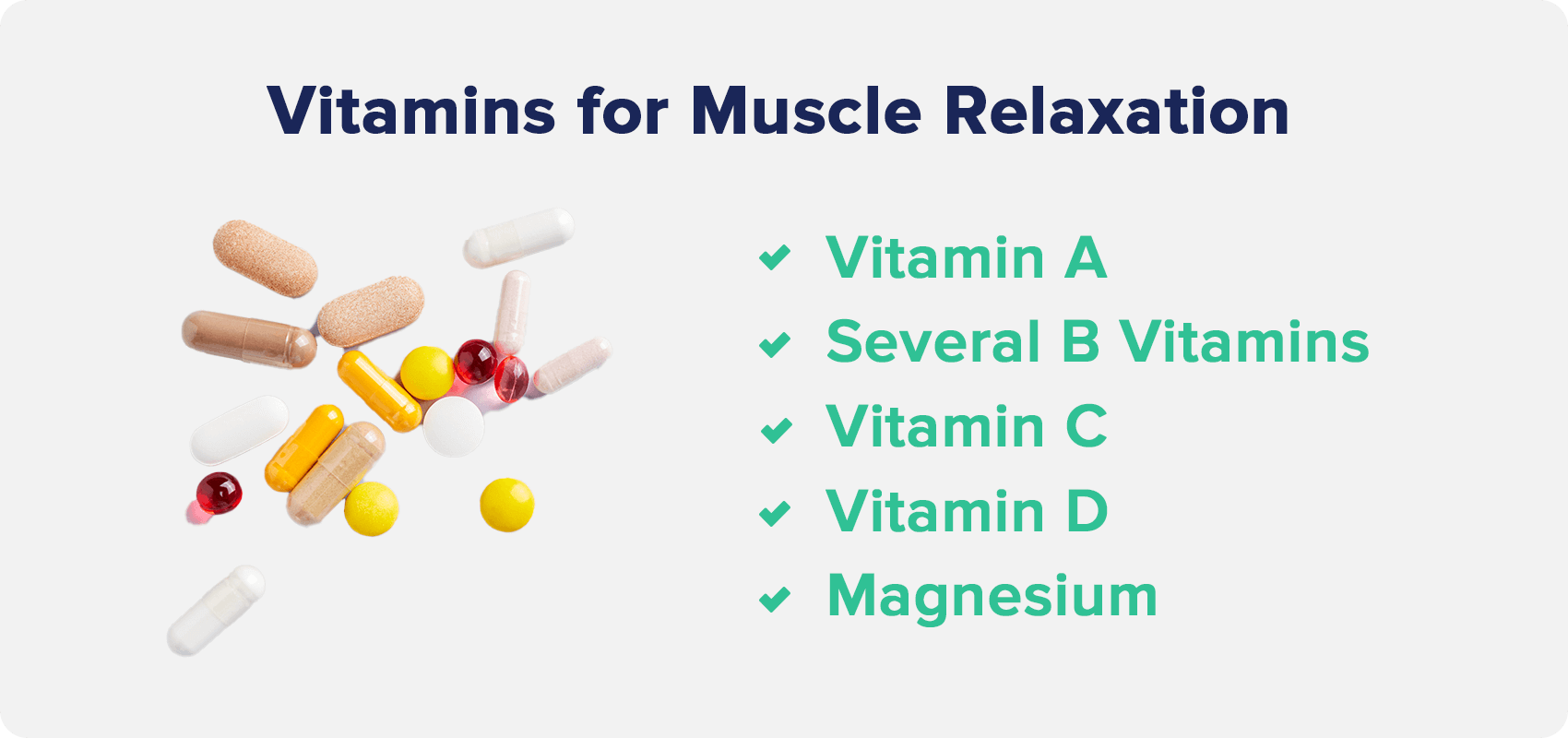
Magnesium deficiency is commonly associated with muscle tension, pain, cramping, and other issues.
Of course, dehydration will also result in a very similar set of symptoms (among many others).
Some vitamin deficiencies (vitamin C and D especially) may also present these symptoms, although not as commonly as magnesium deficiency.
Yes, low vitamin D can sometimes cause tight muscles.
This article demonstrates the tendency of vitamin D deficiency to exacerbate neck and back pain, including muscle spasms.
Participants with chronic neck and back pain reported a more than 70% improvement in their symptoms after a 12-week vitamin D regimen (50,000 IU once a week).
There are many potential causes for muscle tension, including pathological (often neurological) conditions/traumas such as cerebral palsy, polymyositis, spinal cord injury, traumatic brain injury, stroke, and several more.
As we’ve discussed, magnesium or certain vitamin deficiencies may cause muscle stiffness of varying degrees, as will dehydration.
Finally, activities and/or environmental stressors can cause (usually temporary) muscle spasticity, such as heavy physical exertion.
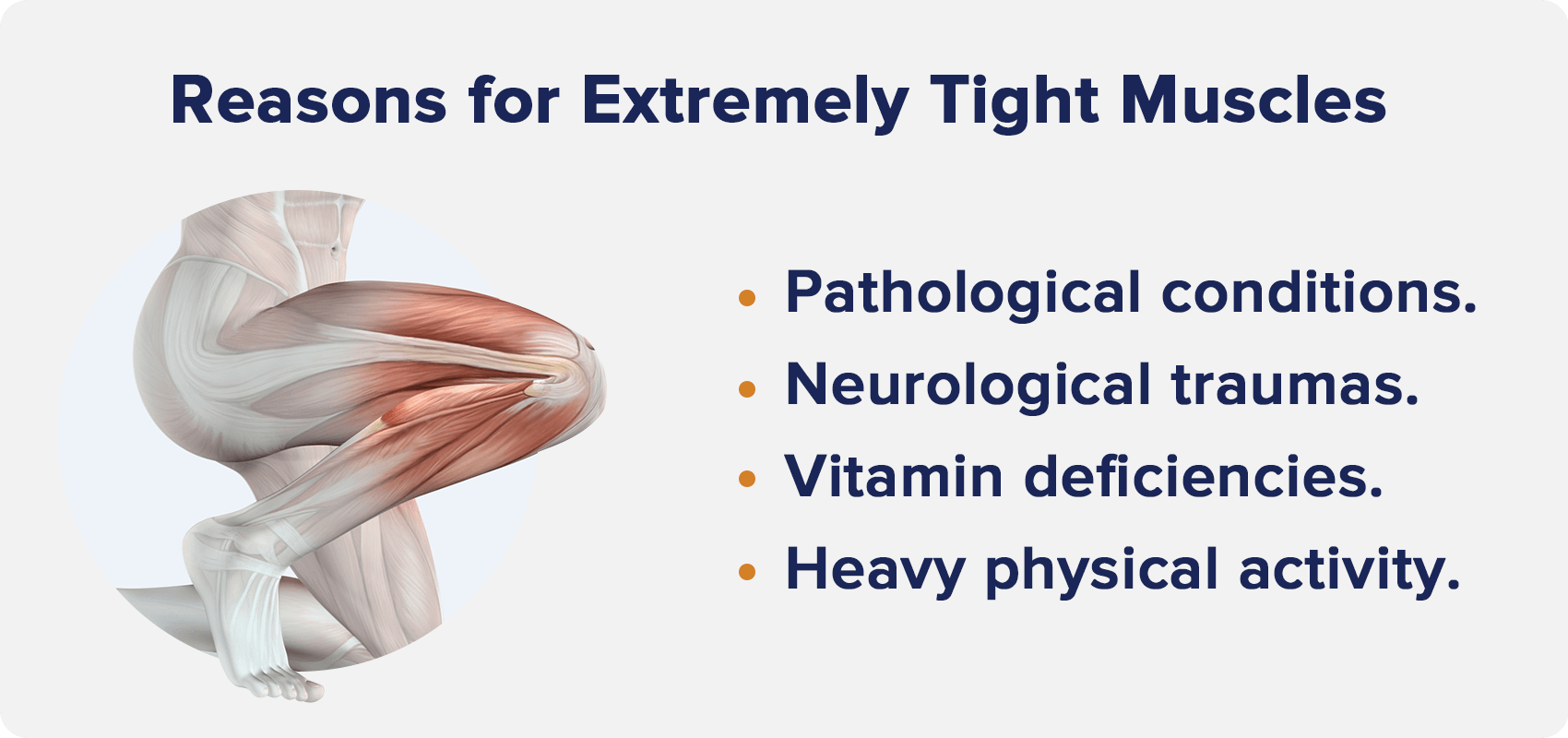
There is a fairly broad range of naturally occurring compounds/nutrients, usually found in plants, that exert muscle-relaxing effects.
They most often achieve this by interfering with one or more steps in the muscle activation process (calcium ion channel, etc.) and/or by promoting relaxation through different pathways.
Antioxidant- and anti-inflammatory-rich foods like tart cherry juice, while they don’t always promote muscle relaxation in a direct sense, offer highly complementary benefits that can facilitate muscle recovery in other ways.
Adequate nutrition and hydration, along with healthy levels of activity, stretching, etc., are effective for preventing unwanted muscle spasticity.
Magnesium is especially important in this regard.
Subscribe now and never miss anything about the topics important to you and your health.